Are you considering using tretinoin to improve your skin? If so, you may be feeling a little overwhelmed.
This guide is created to help beginners understand everything they need to know before starting their tretinoin journey.
Below, I will explain what tretinoin is and how it works.
I will also give some tips on how to avoid irritation and ease discomfort while using tretinoin.
Lastly, I will help you create the best skincare routine to support your skin and help you get the best results from tretinoin.
So, continue reading for the best tretinoin beginner routine to help you avoid side effects while achieving the clear, healthy, glowing skin of your dreams.
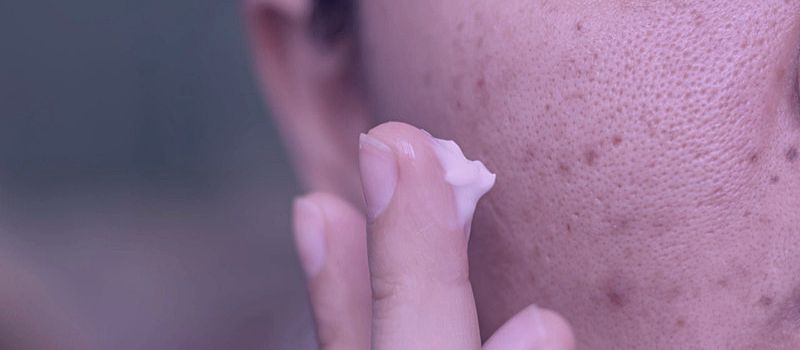
What is Tretinoin?
Tretinoin, or retinoic acid, is a vitamin A derivative used topically for treating various skin concerns.
Tretinoin, all-trans-retinoic acid (ATRA), is a prescription form of vitamin A patented in 1957, FDA approved for medicinal use in 1962, and topical use in 1971.
It was originally marketed under the brand name Retin-A, but there are many brands that you can find today, depending on your location.
All tretinoin products are the same and contain similar ingredients.
What’s different is the brand that carries them and some slight variations in base ingredients, such as polymers that create a slightly different consistency but don’t affect the product’s performance.
Tretinoin comes in either gel or cream formula.
The gel formula usually contains alcohol denat. and is prescribed to those dealing with acne due to its basic and non-comedogenic formula.
The cream formula, on the other hand, usually contains emollients such as isopropyl myristate that soften the skin, which is why cream-based tretinoin is generally prescribed to those with skin aging concerns.
Additionally, tretinoin has three strengths: 0.25%, 0.5%, and 1% (the strongest.)
There are also micro formulas that are usually recommended for sensitive and reactive skin, but these aren’t very popular, and as a result, they are not sold in many countries in the world.
How Does Tretinoin Work?
Once applied to the skin, the active ingredient in tretinoin travels deeper through the epidermal layers and binds to specific receptors involved in the skin’s cellular regeneration process.
This action changes how the cells regenerate, promoting an increased cell turnover rate, which pushes new, healthy skin cells to the skin’s surface.
As healthy skin cells replace older, damaged cells, tretinoin users will notice visible improvement in the skin’s overall appearance.
The Benefits of Using Tretinoin
Consistent tretinoin use will help improve skin health, clarity, and appearance.
- Fades Hyperpigmentation: Tretinoin helps achieve a more even and uniform complexion by accelerating the shedding of dead skin cells, revealing brighter and even skin from underneath.
- Refines Skin Texture: Tretinoin helps refine uneven skin texture by encouraging the production of healthy skin cells, which leads to smoother and softer skin.
- Improves Acne Scarring: Tretinoin can improve the appearance of pitted acne scars by stimulating collagen production, which will fill in and smooth out the appearance of these types of scars.
- Improves Lines and Wrinkles: Tretinoin boosts collagen production in the skin, which helps improve skin elasticity and firmness, leading to a more youthful appearance and decreased lines and wrinkles.
The Side Effects of Using Tretinoin
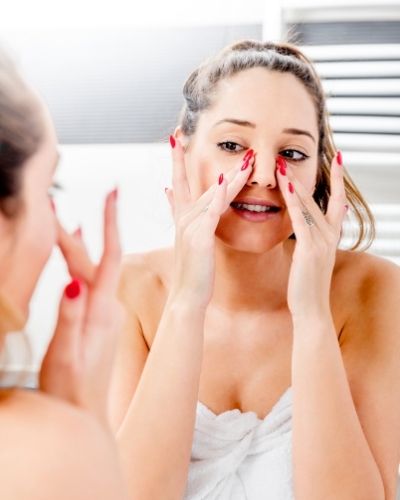
While tretinoin can improve many skin concerns, it’s also notorious for the initial discomforts it causes for many during the acclimation period.
Here are the main side effects of using tretinoin:
- Dryness: Dryness occurs because younger cells pushed to the skin’s surface have a decreased moisture-retaining capacity, leading to moisture evaporation and dry skin.
- Irritation: Increased cellular turnover and dryness can lead to irritation, which is another temporary side effect directly caused by tretinoin.
- Flaking: The increased number of dead skin cells on the skin’s surface will appear dry and flaky initially until the skin acclimates to the active ingredient in tretinoin.
- Peeling: Tretinoin causes peeling because it accelerates the skin cell turnover process, leading to the shedding of old, dead skin cells on the surface.
- Purging: Another common side effect of tretinoin use is purging, which is when your skin breaks out more because the active ingredient causes it to expel the clogs inside the pores towards the skin’s surface faster.
- Sun Sensitivity: Increased sun sensitivity is a common side effect of using tretinoin, which means you must be diligent with your sunscreen application, or your skin will likely burn more easily while on tretinoin.
How to Start Using Tretinoin?
When it’s your first time using tretinoin, you should start by applying a pea-sized amount of the lowest-strength formula to your skin every 72 hours or three days.
It’s essential to be patient and gradually increase the frequency of use to every other day, then daily, over several weeks of use for each increase.
This will help your skin acclimate to the active ingredient and minimize any initial side effects.
Additionally, avoid applying tretinoin to damp skin to reduce potential irritation. The skin is more porous when damp, which means the active ingredient can penetrate deeper, increasing the potential for dryness and irritation.
Finally, when starting tretinoin, make sure your skin is always moisturized and protected with high SPF during the day.
This will help prevent dryness, irritation, and sunburn while your skin adjusts to the active ingredient and the increased cellular turnover it promotes.
Remember, patience is key when using tretinoin, as results can take several months to become noticeable.
But with consistent use and following these tretinoin tips for beginners, you’ll be on your way to healthier, more radiant skin.
How to Apply Tretinoin Correctly?
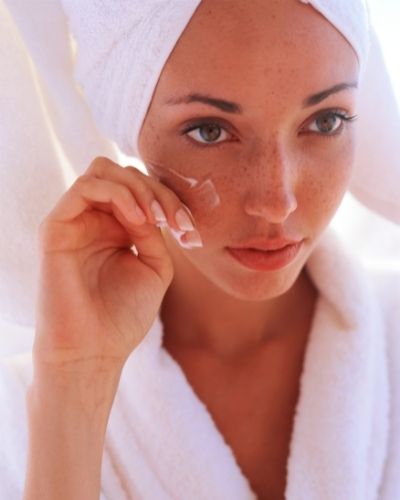
The first step of your tretinoin routine should be cleansing with a gentle facial cleanser that won’t strip your skin or cause further irritation.
After cleansing, wait until your skin is fully dry, and apply a pea-sized amount by dotting bit by bit in different areas of the face, including the forehead, cheeks, chin, temples, and jawline.
Once your dots are evenly distributed, rub the product into the skin with only two fingertips. You don’t want your tretinoin to stay on your hands, so it’s important not to rub it in with all your palms or more than two fingers.
After you’re done, wash your hands with soap because your fingertips will start to peel if even a little bit of tretinoin remains on them.
Wait at least 30 minutes before following up with a moisturizer, as this will give tretinoin time to settle and absorb into the skin without being moved around, which could lead to uneven coverage.
When to Expect Results from Using Tretinoin?
Skin improvements from tretinoin use will be visible after 3-6 months for acne, six months to a year for hyperpigmentation, and 1-2 years of consistent use for lines and wrinkles.
It’s also important to note that any skin improvements require continual use for maintenance, as your skin can revert to its previous state if you discontinue the use of tretinoin.
This is because tretinoin promotes and maintains a healthy skin cell turnover cycle.
If you stop using it, your skin will eventually return to its regular cell turnover rate, which may be slower and cause issues such as acne, hyperpigmentation, texture, lines, and wrinkles.
Assuming the treatment is well tolerated, the only reason to discontinue the use of tretinoin would be pregnancy due to the potential effects it may have on fetal development.
5 Tips for Keeping Your Skin Healthy While Using Tretinoin
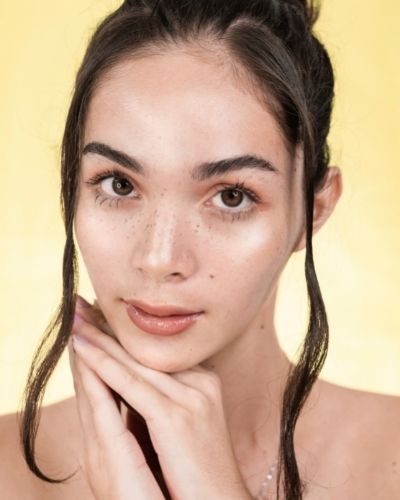
Here are five tips on how to keep your skin healthy when starting tretinoin:
Apply Tretinoin to Dry Skin
Tretinoin is more readily absorbed by wet or damp skin, making it more aggressive and likely to cause irritation, stinging, and sensitivity.
This is why you should always apply tretinoin on clean, dry skin.
Apply Tretinoin on Alternate Days
Start by applying tretinoin every 72 hours because this may help your skin get used to it faster.
Tretinoin triggers a reaction known as “retinization,” which is the binding process that initiates a series of biochemical reactions that regulate gene expression, which in turn influences cellular processes like cell growth and differentiation.
Retinization is also the process of your skin getting used to the active ingredient and showing the common initial side effects associated with tretinoin use.
This process slows down after around 72 hours of the last tretinoin application.
Therefore, using tretinoin every 72 hours, especially when starting treatment, can help avoid a retinization loop – the state of allowing retinization to slow down and get kickstarted again with the next tretinoin application.
This will cause you to constantly deal with the side effects, while your skin will take longer to get used to the active ingredient.
So, while you think you are helping your skin by only applying tretinoin two times a week in the beginning, you may be actually prolonging the process of getting used to the active ingredient.
However, with all this said, you should always listen to your skin, and if you are experiencing uncomfortable symptoms such as intense stinging or burning, you should definitely slow down tretinoin use.
On the other hand, if starting with tretinoin application every 72 hours seems to work without upsetting your skin too much, you should keep up the tempo.
Apply Tretinoin Twenty Minutes After a Moisturizer
When starting tretinoin, you want to take your moisturizing game seriously and diligently apply moisturizer in the morning and evening (20-30 minutes after applying tretinoin), as this will help soothe and protect your skin barrier.
A damaged skin barrier can not only feel uncomfortable and show signs of dryness, redness, irritation, stinging, and burning but can also lead to long-term conditions such as dermatitis and rosacea, which will prevent you from using tretinoin.
Therefore, while you may rely on tretinoin for any other skin concern, keeping your skin barrier healthy should be the top priority when starting this treatment.
Apply Moisturizer over Tretinoin
If your skin becomes too irritated, it’s best to avoid applying tretinoin for several days.
Alternatively, you can apply tretinoin 20-30 minutes after moisturizing.
This method will buffer the strength while still giving the desired results.
Have a Gentle Skincare Routine When Starting Tretinoin
A simple skincare routine that consists of gentle products is key when starting tretinoin, as your skin will likely get irritated in the first few weeks and need special care and support.
The Best Skincare Routine When Starting Tretinoin
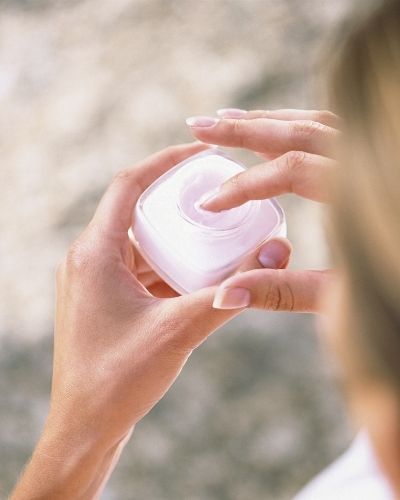
Here’s the best skincare routine for when starting tretinoin:
Gentle Cleanser
A gentle, non-foaming cleanser that won’t strip and dry out your skin is important when starting your tretinoin journey.
RELATED: Best Cleansers While on Tretinoin.
Nourishing Serum
A nourishing serum isn’t a must, but it can be a beneficial addition to your skincare regimen when starting tretinoin, as it can help hydrate the skin and ease some of the initial discomfort.
Opt for products containing hydrating, soothing, and nourishing ingredients, such as hyaluronic acid, green tea, licorice extract, chamomile, etc.
Heavy-Duty Moisturizer
As mentioned above, moisturizing is one of the most important steps in your tretinoin journey.
A good moisturizer will support your skin barrier and reduce irritation.
Sunscreen
Pick a sunscreen with a high SPF of 30 and higher that’s gentle and non-irritating to your skin.
RELATED: Best Sunscreens While on Tretinoin.
What You Shouldn’t Use While on Tretinoin?
Here are some skincare ingredients you should stay away from while using tretinoin:
- Exfoliating acids (AHAs, BHAs, and PHAs.)
- Exfoliating enzymes (pineapple, papaya, and pumpkin.)
- Scrubs (granules, powders, and kernels.)
- Alcohol denat.
- Fragrance.
- Essential oils.
These can make your skin more irritated and uncomfortable, compromising its barrier, prolonging healing, and potentially leading to long-term inflammatory skin conditions.
Extra Tips for Starting Tretinoin
Besides being armed with the knowledge of how tretinoin works, what are some benefits and side effects of using it, and how to use it correctly and minimize discomfort, here are a few extra tips for starting tretinoin that can help you get through the initial phase more smoothly:
Don’t Rush Into Increasing Usage
When starting tretinoin, it’s crucial not to rush into increasing its usage.
Your skin needs time to acclimate to the potent active ingredient because retinoic acid will create many changes in cellular function, which will take time to adjust.
If you increase the frequency too quickly, it can lead to excessive dryness, peeling, or even severe irritation.
These side effects can be uncomfortable and might discourage you from continuing with the treatment.
They can also lead to more severe and even permanent skin conditions, such as dermatitis and rosacea.
Therefore, slowly and steadily increasing the usage allows your skin to build tolerance gradually, leading to better results and fewer side effects in the long run.
Remember, maintaining healthy skin is a marathon, not a sprint.
Stick to Low-Strength Formulas
While you may be tempted to dive into higher-strength tretinoin formulas in hopes of seeing faster results, as a beginner, it’s wiser to stick to low-strength options.
High-strength formulas can bombard your skin with too much retinoic acid at once, leading to inflammation, excessive dryness, and other reactions that can disrupt your skin’s barrier function.
On the other hand, low-strength formulas deliver the benefits of tretinoin, such as accelerated cell turnover and collagen production, but at a gentle pace that is more manageable for your skin.
This allows your skin to acclimate to the active ingredient and reduces the risk of severe, uncomfortable side effects.
Remember, patience and consistency are key to maintaining healthy skin.
Don’t Apply Too Much Product
Less is definitely more when starting tretinoin.
Applying more product than necessary won’t speed up your results, but it could cause irritation, redness, and peeling that could’ve been avoided with correct tretinoin use.
Retinoic acid is a potent active ingredient; a pea-sized amount is all you need to cover your face without exacerbating discomfort.
Learn How to Relieve Side Effects
Mild side effects such as dryness and irritation when starting tretinoin are common, and learning to relieve them is crucial, particularly for beginners.
As you embark on your tretinoin journey, your skin may encounter changes that could be uncomfortable.
Adopting a gentle skincare regimen can help alleviate these effects, ensuring your skin remains healthy and can heal faster.
Listen to Your Skin
Listening to your skin is definitely one of the most critical aspects of your tretinoin journey, as is managing potential side effects.
Your skin is your body’s largest organ, and it communicates with you in its unique ways.
Just like you wouldn’t ignore a headache from not drinking enough water, you shouldn’t overlook severe discomfort or any abnormal reactions from using tretinoin, as these signal that your skin needs a break from the product.
Rather than persisting with continuous application despite these signs, taking intermittent breaks allows your skin to recuperate and adjust to the active ingredient.
This enhances your tretinoin usage experience, reduces potential skin damage, and makes the journey smoother and more beneficial in the long run.
Learning to discern these signals and responding accordingly is vital for beginners embarking on their tretinoin journey.
Frequently Asked Questions
Here are some frequently asked questions by tretinoin beginners:
Which Tretinoin is Best for Beginners?
0.025% is typically the lowest strength widely available on the market and the most suitable option for tretinoin beginners.
There are also lower or micro formulas of 0.01%-0.02%, which are best for sensitive and reactive skin; however, they aren’t that popular and widely available, so you may be unable to find them in your country.
When to Start Tretinoin?
Tretinoin is deemed safe for children as young as 12 years old and is often prescribed to teenagers who are experiencing puberty acne.
However, the best time to start tretinoin is in your early 20s.
Can You Use Tretinoin Every Night?
Yes, tretinoin can be used every night, provided your skin tolerates it well.
However, starting with application every third night is recommended to allow your skin to adjust to the potent active ingredient.
My Other Tretinoin Related Articles:
Is Generic Tretinoin as Effective as Retin-A?
Does Tretinoin Work for Wrinkles?
Adapalene vs Tretinoin: Which is the Best for Anti-Aging?
How to Layer Tretinoin With Other Products?
10 Best Moisturizers to Use With Tretinoin
How to Fix Dry Skin From Tretinoin?
How do You Know Tretinoin is Working?
Can You Mix Benzoyl Peroxide With Tretinoin?

My name is Simone and I am a certified skin specialist. I created this website to teach my readers how to take great care of their skin and I also like to occasionally share my honest opinions on skincare products I’ve tried. You can learn more about me here.
